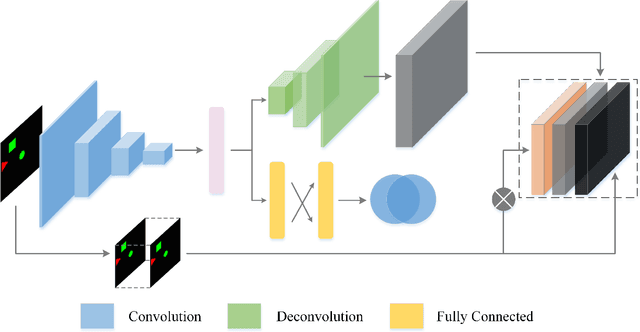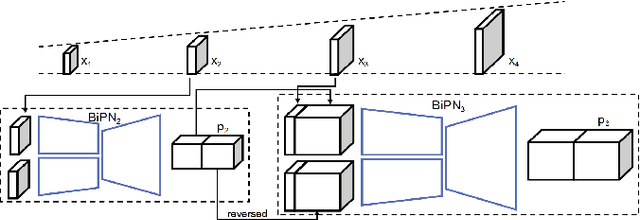Weimian Li
Brain-Inspired Inference on Missing Video Sequence
Dec 15, 2019

Abstract:In this paper, we propose a novel end-to-end architecture that could generate a variety of plausible video sequences correlating two given discontinuous frames. Our work is inspired by the human ability of inference. Specifically, given two static images, human are capable of inferring what might happen in between as well as present diverse versions of their inference. We firstly train our model to learn the transformation to understand the movement trends within given frames. For the sake of imitating the inference of human, we introduce a latent variable sampled from Gaussian distribution. By means of integrating different latent variables with learned transformation features, the model could learn more various possible motion modes. Then applying these motion modes on the original frame, we could acquire various corresponding intermediate video sequence. Moreover, the framework is trained in adversarial fashion with unsupervised learning. Evaluating on the moving Mnist dataset and the 2D Shapes dataset, we show that our model is capable of imitating the human inference to some extent.
Long-Term Video Interpolation with Bidirectional Predictive Network
Jun 13, 2017



Abstract:This paper considers the challenging task of long-term video interpolation. Unlike most existing methods that only generate few intermediate frames between existing adjacent ones, we attempt to speculate or imagine the procedure of an episode and further generate multiple frames between two non-consecutive frames in videos. In this paper, we present a novel deep architecture called bidirectional predictive network (BiPN) that predicts intermediate frames from two opposite directions. The bidirectional architecture allows the model to learn scene transformation with time as well as generate longer video sequences. Besides, our model can be extended to predict multiple possible procedures by sampling different noise vectors. A joint loss composed of clues in image and feature spaces and adversarial loss is designed to train our model. We demonstrate the advantages of BiPN on two benchmarks Moving 2D Shapes and UCF101 and report competitive results to recent approaches.
 Add to Chrome
Add to Chrome Add to Firefox
Add to Firefox Add to Edge
Add to Edge